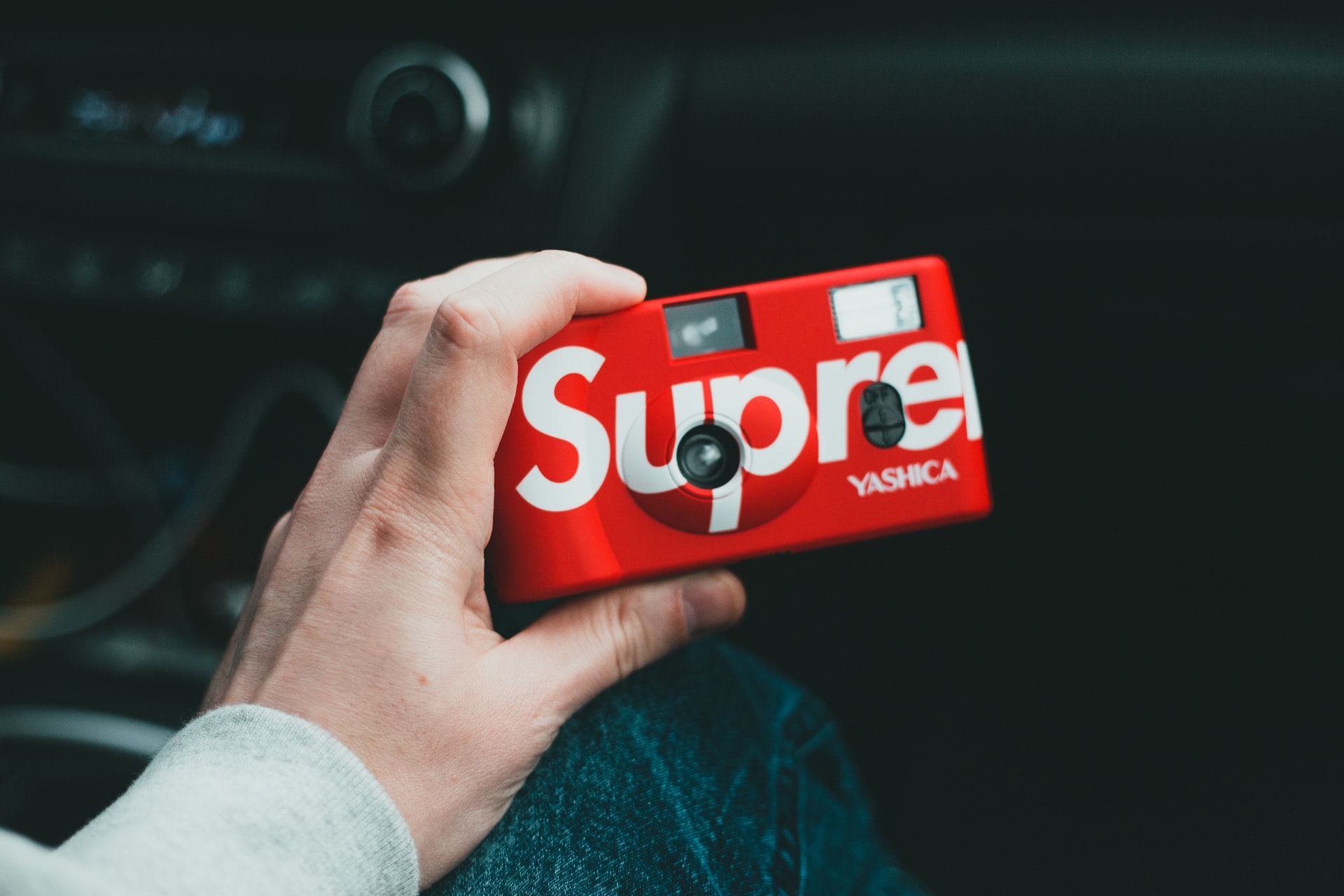Supreme: the kings of plagiarism?

For many, Supreme (NYSE: VFC), is a religion. It’s more than just a brand. At Supreme, they are marketing geniuses, no doubt about it, but at the same time they might be one of the biggest copiers of the 21st century. Yet, for lovers of luxury urban clothing, Supreme is the example to follow.
Supreme was created by James Jebbia, an American-British skateboarder who moved to New York. James knew very well what it takes to be a “cool” skater, which is basically to be a person who invests considerable amounts of money in skateboards and clothes, so one day he thought “hey, something is missing here, what if I open a store?” and decided to create a brand so powerful, that people would basically end up fighting each other just for a piece of clothing that has a logo with a red box; an iconic logo, a recognizable logo, a logo that has been accused of being copied.
Having already created the Supreme brand, the idea of creating very limited editions of each item came up; from an economical point of view, the key to Supreme’s success, as they are certainly marketing geniuses. Why work 100 hours a week, to earn $1 million USD, when you can work 50 hours a week and earn $2 million USD?
Because the supply of each item is very limited, and the demand is much higher, each item ends up being an object of attainment, so important is the factor of being an “object of desire” that it has been seen several times that when Supreme launches a new collection, long lines are formed on the streets. Then, after selling out the entire collection in a few minutes, the price war begins online, where anything that was worth $30 to 50 USD you would find a few days later for $800 to $1,000 USD on platforms such as eBay (NASDAQ: EBAY).
A fascinating example is the Supreme brick (which is worth $30 USD originally). The same red clay brick resold on eBay is now worth $1,000 USD. The brand has also created items in collaboration with artists such as Takashi Murakami, Terry Richardson and major brands such as Nike (NYSE: NKE), Vans, and The North Face. There was even a famous skateboard, with Damien Hirst’s signature colored dots, that sold for more than $7,000 USD.
All this allows us to understand the power of branding. It is bold to say that Supreme are real copiers, but there is serious evidence that despite it being an unpopular belief, this idea might be true; for example, look at the famous Adidas (BATS EU: ADS) RUN DMC sweatshirt, and Supreme has a very similar sweatshirt matching that of Adidas.
Then, look at Metallica’s famous Load album cover. Well, Supreme has a sweatshirt with a similar design, just like the Scarface jacket, designed by Jh Design, and Supreme also has an almost identically styled jacket.
The funny thing is that no brand seems to be out of Supreme’s reach, for example, it is possible to see this kind of coincidence with a Coca-Cola (NYSE: KO) sweatshirt, coincidentally Supreme has a sweatshirt with a very similar design. Another example is McDonald’s (NYSE: MCD), a brand that doesn’t stand out for being particularly good aesthetically (as far as clothing is concerned), but no matter, with the Supreme logo, it’s cooler and worth a lot more.
And all of this is just the tip of the iceberg, it’s a tiny part of the number of designs Supreme is suspected to have copied. In fact, there’s an Instagram (NASDAQ: FB) account called @supremecopies.
The question some people are asking is how can Supreme not be a brand that copies, if it has proven to be just that since day one with the creation of the brand, the name, and the logo? Because the logo is hyper-recognizable, and it curiously resembles the work of Barbara Kruger, along with the name “Supreme” resembling the name on a T-shirt of a famous skateboard brand, called Powell Peralta.
In fact, the creator of Supreme himself acknowledged that the logo of the brand was inspired by the style of Barbara Kruger’s work, this recognition was curiously made in the context of a lawsuit he filed against another brand that had copied Supreme.
Interestingly, due to problems to registering its trademark in different countries, the company has had to watch helplessly while daring entrepreneurs who have created a store in Barcelona called Supreme, a store that has the same logo as Supreme, that uses the same colors as Supreme, and that sells all their Supreme clothes, but it is a fake.
The question is does it really matter if the T-shirts that you’re going to buy are the same white T-shirt with the Supreme logo on them? You wouldn’t see the difference between the real one and the fake one. The irony is that after copying so much, now they can only watch as they are copied by others.
Many will say that when you copy a person, it is plagiarism, but when you copy many, it is an inspiration. Either way, whenever you are asked, it is fair to say who you are inspired by and who you admire. Because while creating a world-renowned brand (and making millions in the process) is great, giving honor to those who deserve it is even more so.
